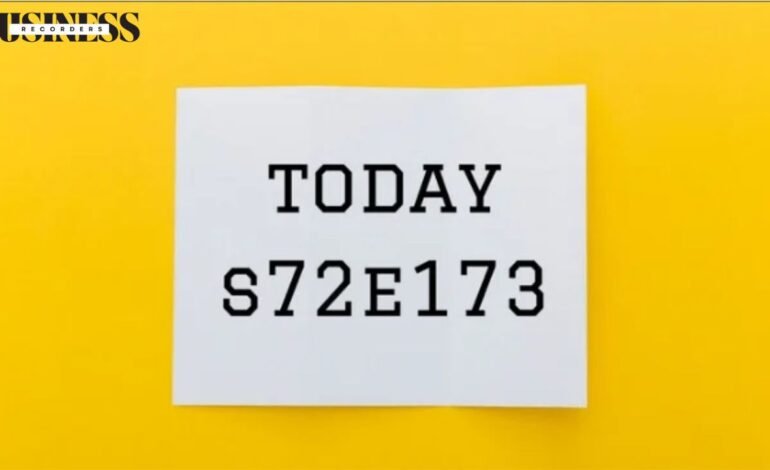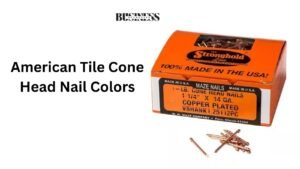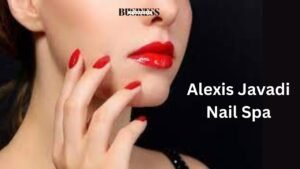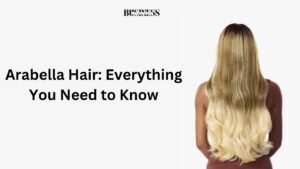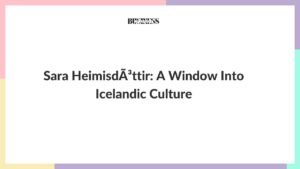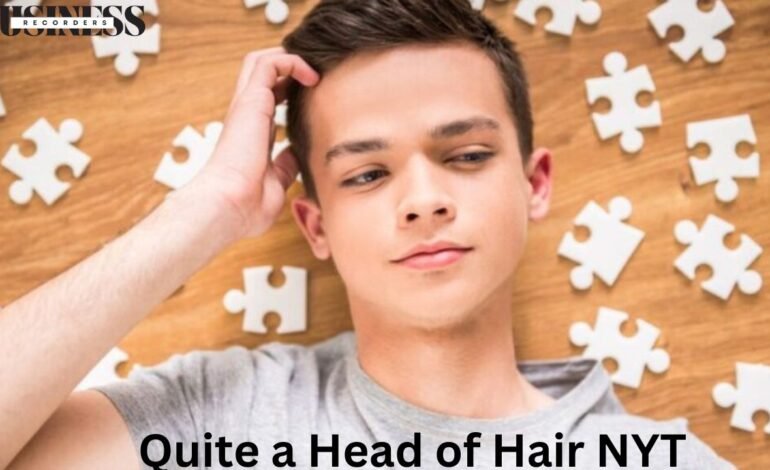
Quite a Head of Hair NYT
“Quite a head of hair NYT” refers to a popular topic discussed in the New York Times, focusing on various aspects of hair, including hairstyles, care tips, and emerging trends. This topic captures the interest of many readers because hair plays a significant role in personal expression and identity. It can reflect one’s personality, culture, and sense of style. Many individuals are eager to learn how to maintain healthy hair or discover the latest hair trends that suit them.
The New York Times often covers an array of hair-related subjects. Readers can find helpful tips on hair care routines, insights into hairstyling, and articles exploring the cultural significance of hair. The articles are engaging and informative, aiming to help people understand the importance of hair and how it can serve as a powerful form of self-expression. This aligns perfectly with the concept of quite a head of hair NYT, which encapsulates these discussions.
Hair is not just an accessory; it is an integral part of who we are. The way we style our hair can communicate our mood, our background, and even our beliefs. For these reasons, “quite a head of hair NYT” resonates with a broad audience, sparking interest and discussion.
Why Do People Care About Hair?
People care about hair for a variety of reasons. One primary reason is that hair can influence how others perceive us. It affects self-confidence and self-image. A great hairstyle can make someone feel good and more assured in their appearance. Research shows that individuals often judge others based on their hair, making it an essential aspect of social interaction, as highlighted in articles from “quite a head of hair NYT.”
Moreover, hair is a key part of many cultural identities. For instance, certain hairstyles may symbolize beauty, strength, or community. Many people wear their hair in specific styles that represent their cultural background or heritage. This connection to culture makes hair even more significant for individuals who want to express pride in their roots.
Cultural traditions around hair vary widely around the world. In many Indigenous cultures, hair is seen as sacred and holds deep spiritual meaning. For example, among some Native American tribes, long hair represents a connection to nature and the ancestors. In other cultures, specific hairstyles may indicate social status or marital status. Understanding these meanings can help people appreciate hair’s significance beyond mere aesthetics, as discussed in “quite a head of hair NYT.”
What Are the Most Popular Hairstyles?
Several popular hairstyles appeal to different individuals and demographics. These styles can vary by age, culture, and personal preference. Some common hairstyles include bobs, long layers, and various types of curls. Each of these styles offers versatility and allows for a range of looks.
The bob haircut is a chic and easy-to-maintain option that suits many face shapes. This style can be worn straight, wavy, or curly, making it adaptable to different occasions. It is a timeless choice that has remained in vogue for decades. Many celebrities and influencers have popularized this style, contributing to its widespread appeal, often featured in discussions of “quite a head of hair NYT.”
Long layers are another favored hairstyle. This option adds movement and volume to longer hair, making it an excellent choice for those looking to enhance their locks. Layers can be styled in various ways, from beachy waves to sleek and straight looks. Long layers provide flexibility and can easily transition from casual to formal settings.
Curls are popular for adding texture and dimension to hair. They can be achieved through various methods, such as curling irons, rollers, or natural curling. Many people love the playful and fun vibe that curls offer, making this style a go-to for special occasions or everyday wear. The ability to customize curls—tight or loose—adds to their popularity and is frequently mentioned in “quite a head of hair NYT.”
How Can You Care for Your Hair?
Caring for hair is essential for keeping it healthy and beautiful. A proper hair care routine can prevent damage and promote growth. Basic hair care steps include washing, conditioning, and protecting hair from damage.
Using the right shampoo and conditioner is crucial. These products should match your hair type. For instance, individuals with dry hair should use moisturizing shampoos and conditioners, while those with oily hair may benefit from clarifying formulas. A regular trimming schedule can also help maintain hair health and prevent split ends. Getting a trim every six to eight weeks can keep hair looking fresh and healthy, as emphasized in articles on “quite a head of hair NYT.”
Protecting hair from heat styling tools is another essential aspect of hair care. Heat can cause significant damage, leading to dryness and breakage. Using heat protectant sprays before styling can help mitigate this damage. Additionally, individuals should avoid over-styling and give their hair breaks from heat tools whenever possible.
Finally, protecting hair from environmental factors is crucial. Sun exposure, pollution, and harsh weather can all take a toll on hair health. Wearing hats or using UV protection sprays can help shield hair from the sun. Regularly moisturizing hair, especially in dry climates, can help maintain its health and shine.
What Products Help Maintain Healthy Hair?
Several products can help maintain healthy hair. These include shampoos, conditioners, hair oils, and masks. Each product serves a specific purpose in a hair care routine.
Shampoos are designed to cleanse the scalp and hair, removing dirt and product buildup. Selecting the right shampoo for your hair type is essential for achieving optimal results. For instance, people with curly hair often need sulfate-free shampoos to avoid stripping natural oils.
Conditioners provide moisture and nourishment to hair. They help detangle and soften hair, making it easier to manage. Leave-in conditioners can also be beneficial, especially for individuals with thick or curly hair, as they offer extra hydration throughout the day.
Hair oils are popular for adding shine and protecting hair from damage. Oils such as argan, coconut, and jojoba are excellent choices for nourishing hair and preventing breakage. A few drops can go a long way in making hair look healthy and vibrant, which aligns with the themes found in “quite a head of hair NYT.”
Hair masks offer deep conditioning treatments, helping to repair and strengthen hair. These products are often rich in nutrients and can address specific concerns like dryness, frizz, or damage. Using a hair mask once a week can significantly improve overall hair health and appearance.
Are There Natural Remedies for Hair Care?
Many people seek natural remedies for hair care. These methods often use common ingredients found in the kitchen or pantry. Natural remedies can be gentle on hair and the scalp, making them a popular choice for those who prefer to avoid harsh chemicals.
Coconut oil is a well-known natural remedy that can moisturize hair and reduce breakage. It penetrates the hair shaft effectively, providing deep hydration. Massaging coconut oil into the scalp can also promote healthy hair growth.
Olive oil is another excellent option for hair care. It adds shine and nourishment, making hair look healthy and vibrant. A warm olive oil treatment can help repair dry and damaged hair, making it a great choice for those with chemically treated locks.
Aloe vera is known for its soothing properties and is great for maintaining a healthy scalp. It can reduce dandruff and promote hair growth when massaged into the scalp. Aloe vera gel can also add moisture and shine to hair, making it a popular choice in many natural hair care routines featured in “quite a head of hair NYT.”
Finally, apple cider vinegar is often used as a natural conditioner. It helps balance the scalp’s pH and removes product buildup, leaving hair shiny and manageable. Mixing equal parts apple cider vinegar and water can create a simple hair rinse that enhances shine.
How Do Hairstyles Affect Self-Image?
Hairstyles can significantly affect self-image. A great hairstyle can boost confidence and influence how individuals feel about themselves. Many people believe their hair represents their personality, so changing a hairstyle can also signify personal change.
For instance, someone may choose a bold haircut or color to express newfound confidence or a desire for change. This act can symbolize taking control of one’s life and embracing individuality. Alternatively, someone may maintain a classic style for a sense of tradition and familiarity, reflecting their personality and values, as often discussed in “quite a head of hair NYT.”
Research indicates that hair can influence first impressions. Studies show that people often form opinions about others based on their hairstyles. This makes it essential for individuals to choose hairstyles that align with their self-image and goals.
Furthermore, societal standards of beauty can affect how people perceive their hair. When individuals feel pressured to conform to specific styles, it can lead to dissatisfaction. Understanding the connection between hairstyles and self-image can help individuals make choices that align with their identities and contribute to a positive self-image.
What Are the Cultural Significances of Hair?
Hair carries cultural significance in many societies. Different cultures have various beliefs and traditions surrounding hair. For example, in some cultures, long hair symbolizes beauty and femininity. In others, specific hairstyles can represent social status or community belonging.
In African cultures, hairstyles can signify tribal affiliation and heritage. Many traditional hairstyles are passed down through generations, holding deep cultural meaning. For instance, some hairstyles are unique to specific tribes and can indicate age, marital status, or social rank. This cultural dimension of hair is often explored in articles on “quite a head of hair NYT.”
In contrast, Western cultures may focus more on trends and fashion. Hair can be seen as a canvas for artistic expression, with people experimenting with colors and styles. While this approach offers freedom and creativity, it can also lead to issues like cultural appropriation, where individuals adopt hairstyles from cultures without understanding their significance.
Understanding these cultural meanings can help people appreciate the diverse significance of hair across the world. It promotes respect for different traditions and encourages individuals to celebrate their unique hair journeys, a key message found in “quite a head of hair NYT.”
How to Choose the Right Hairstyle for You?
Choosing the right hairstyle is essential for expressing your personality and enhancing your overall look. Here are some tips to help you decide on the perfect style for you:
- Consider Your Face Shape: Different hairstyles suit different face shapes. For example, oval faces often work well with various styles, while round faces may benefit from longer, layered cuts that elongate the face.
- Think About Your Lifestyle: Your daily routine should influence your hairstyle choice. If you have a busy lifestyle, opt for low-maintenance styles that don’t require daily styling. If you enjoy experimenting, bolder styles may be more suitable.
- Know Your Hair Type: Understanding your hair type can help you choose a hairstyle that works with your natural texture. For instance, thick hair may hold certain styles better than fine hair.
- Seek Inspiration: Browse magazines or social media for hairstyle inspiration. Look for styles that resonate with you and reflect your personality.
- Consult a Professional: If unsure, seek advice from a hairstylist. They can provide personalized recommendations based on your preferences and hair type, further highlighted in “quite a head of hair NYT.”
Conclusion
“Quite a head of hair NYT” emphasizes the importance of hair in personal expression and cultural identity. Through engaging articles, readers can learn about hair care, popular styles, and the cultural significance of hair. Understanding hair care routines, selecting suitable products, and appreciating the cultural meanings of hair can contribute to healthier hair and a positive self-image.
As trends evolve, individuals can explore new styles and embrace their authentic selves through hair. The connection between hair and identity remains strong, reminding us that our choices reflect who we are. Whether it’s a bold cut or a classic style, hair allows for personal expression, celebrating individuality and beauty in all its forms.

